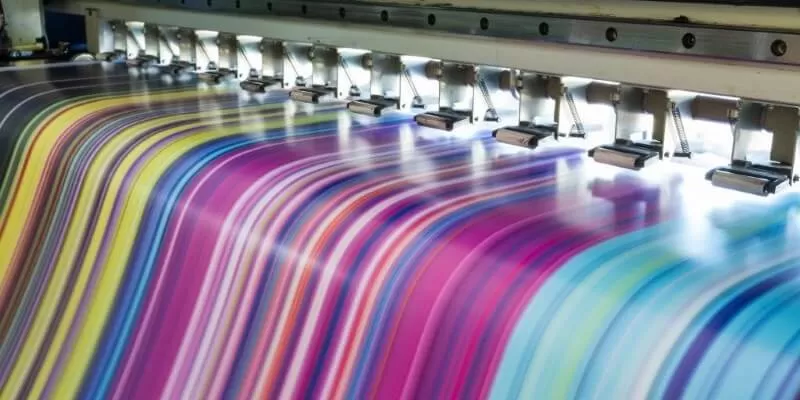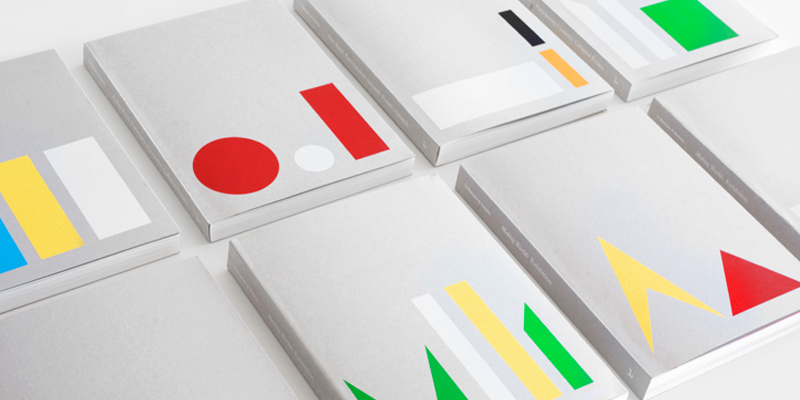
Compare offset and digital printing
When ordering printed products in a printing house, they can offer two types of printing — offset and digital. And it is not always clear how one type differs from another and which one to choose in the end.
Let’s figure out how offset printing differs from digital and which one is better for creating various printing materials.
How digital printing works

The principle of digital printing is very simple — an electronic layout of a document is sent to the printer (inkjet, laser or sublimation, depending on the task and the equipment used), which must be printed on paper, and the device prints it.
The main advantage of digital technology is speed.. Documents, polygraphy, images and everything else can be printed on paper in a matter of seconds. Of course, the specific preparation time depends on the workload of the printing house, prepress issues, the volume of circulation and the required postpress operations.
In addition, digital printing is possible on ultra-small print runs — from 1 copy. Moreover, each item can be customized. For example, print five postcards with a unique recipient name on each.
And finally, you can always quickly make changes to the layout. Thanks to this, if an error is found after receiving the samples, it can be corrected.
However, This type of printing procedures also has disadvantages:
-
Relatively low color saturation, contrast and number of shades. Although, of course, the specific parameters of «visual characteristics» depend on the equipment used. However, the use of offset in the vast majority of cases provides increased brightness and saturation. Usually digital technique involves the use of standard palettes — CMYK or 3-4 Pantone colors. But offset does not limit designers and printers;
-
Expensive copy. Moreover, the relatively high price remains even for large print runs, as a result of which it is better to print printed products in thousands of quantities in offset.
However, if you need to print something urgently or in small runs (up to several hundred copies), then it is more advisable to use the digital method. But it is worth noting that for full-color, detailed images with many shades and gradient transitions, sublimation technology, which is not offered in all printing houses, or offset is better suited — and in this case it is better to overpay than to get not the brightest result.
How offset printing works

Offset printing, as the name implies, requires the use of offset — a special printing form through which toners are applied to paper. And the main problem of this type of displaying images is long preparation. Offset needs to be assembled, cut, just prepared … All this takes time.
But offset technology allows the use of non-standard coloring materials. For example, display an image using a four-tone palette to increase contrast and detail shades. Or print with additional colors — «gold», «silver», varnishes and other materials.
In terms of brightness and saturation of finished materials, in most cases, offset technology is comparable to sublimation. However, the possibility of using additional colors allows you to apply unusual, impressive solutions.
The second advantage of offset printing is the low cost per print. That is why it is recommended to use it in large print runs. So, in most cases, magazines and newspapers are printed using offset technology.
TNevertheless, office printing also has disadvantages:
-
Very long prepress. So, from placing an order at a printing house to receiving it, it can take several days, or even a couple of weeks, if the layout implies difficulties (the use of the same “metallic” paints and varnishes);
-
Expensive for small runs. Offset, as has been repeatedly said above, must first be prepared. Because of this, the price of a copy in a circulation of up to 500 units becomes disproportionately higher than with a digital technique;
It is impossible to individualize or quickly make changes. Once the offset has begun to be made, it will no longer be possible to change it. So the layout must be repeatedly checked before sending.
But offset printing is perfect for large print runs and the preparation of really impressive printed products.
What is better to choose?
It is better to build on three parameters — the volume of circulation, the speed of production, the requirements for saturation and non-standard design techniques.
|
|
|
|
|
Number of copies
|
From 1 unit, and on large volumes the cost may be insignificant, but will decrease
|
From 500 units. The more — the lower the cost of one print. Up to 500 units — possible, but impractical, as the price will be too high
|
|
|
Maximum operational. It can take from several minutes to one or two days, depending on the circulation.
|
From 2 working days. And most of the time is spent on offset production.
|
|
|
Standard palette in four CMYK or three Pantone colors
|
Four-color palette plus any additional shades — «metal», varnishes, paint with glitter
|
|
|
Yes, if printed in multiple passes
|
No. Technically, changes can be made, but they will require the production of a new offset, which will increase production time and cost of work.
|
Thus, offset technology is better suited for large volumes, while digital technology is better suited for small-scale printing.
Добавить комментарий
Для отправки комментария вам необходимо авторизоваться.